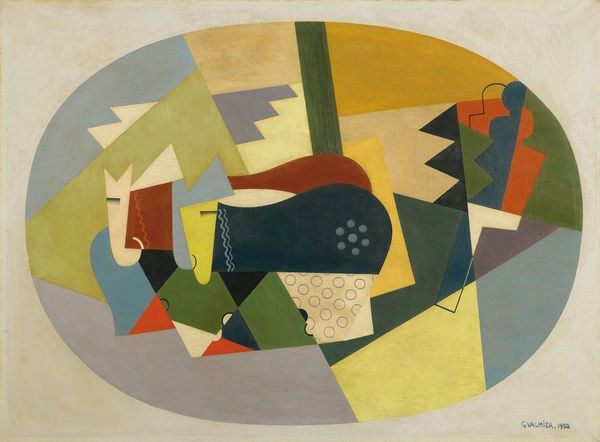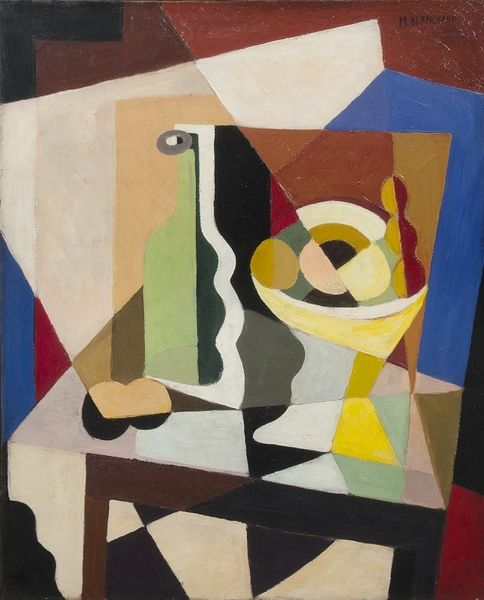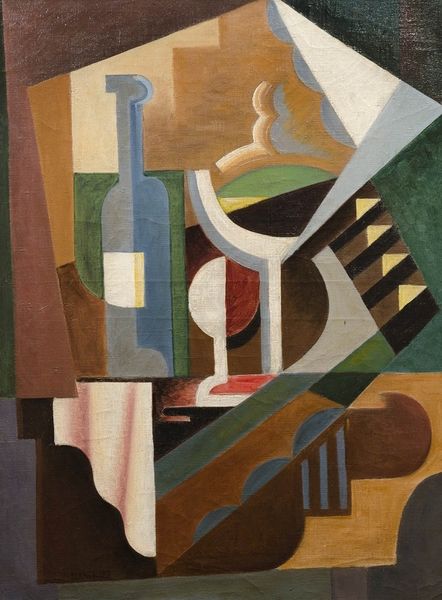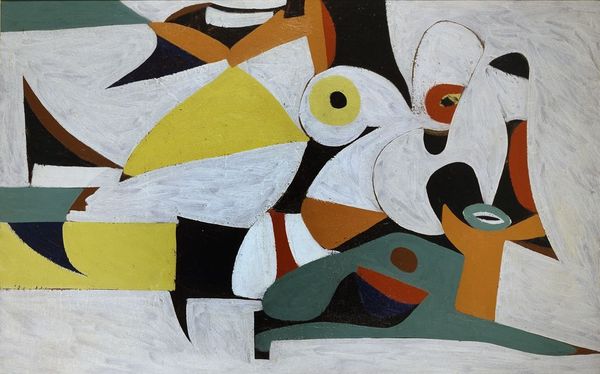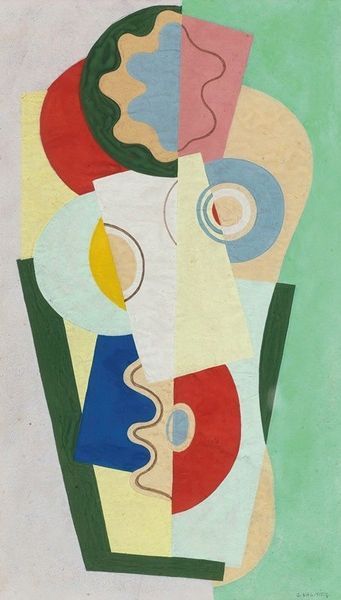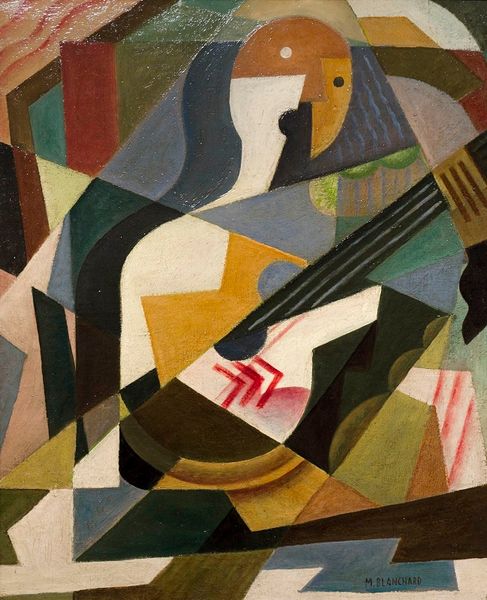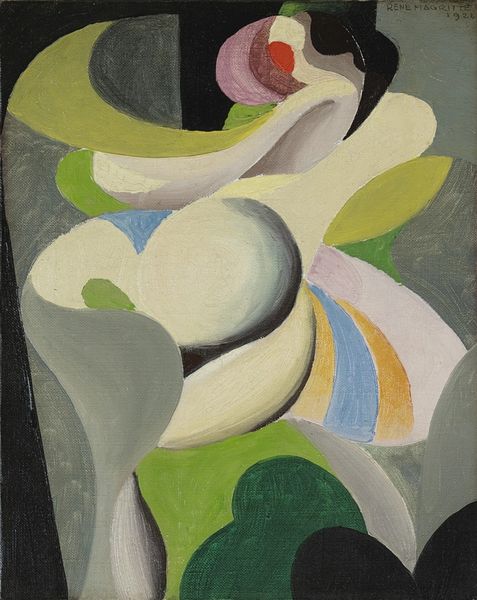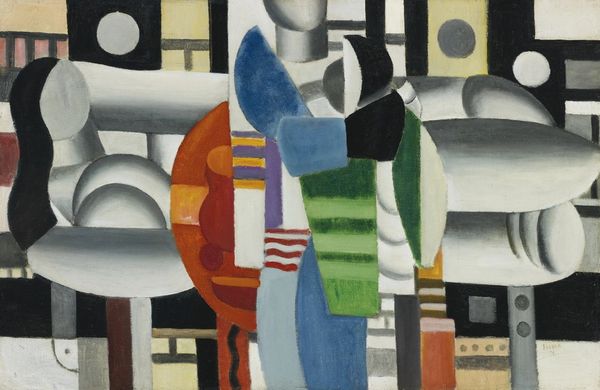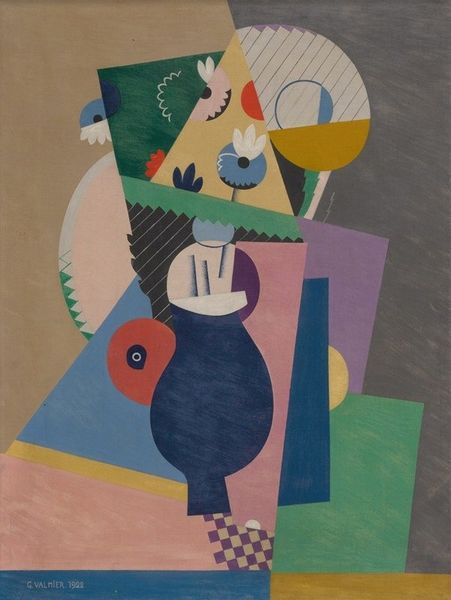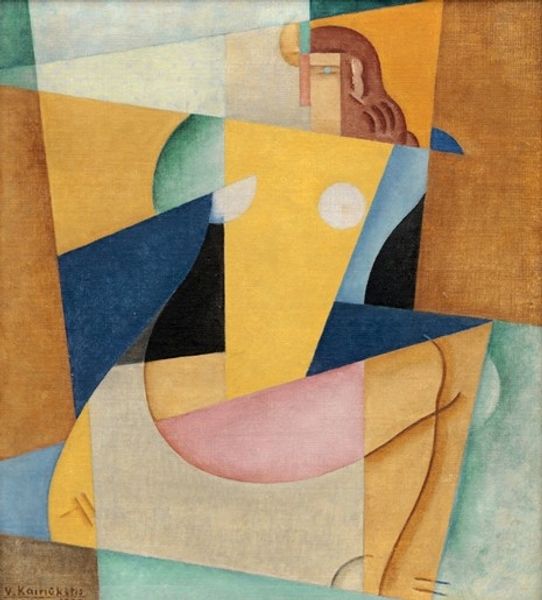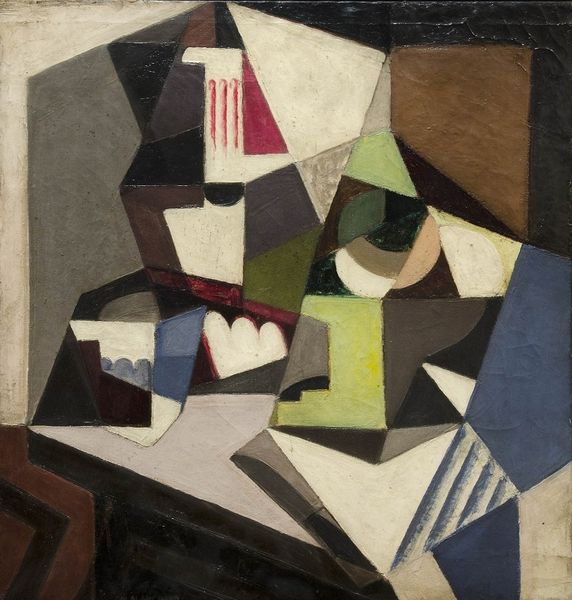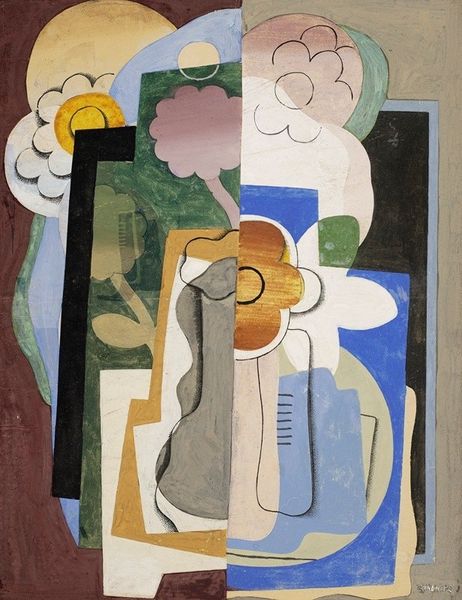
painting, watercolor
#
cubism
#
abstract painting
#
painting
#
figuration
#
watercolor
#
geometric
#
watercolor
Copyright: Public domain US
Curator: Jean Metzinger's watercolor and painting from 1923, entitled "Pitcher, hen house," greets us with a whimsical collection of geometric forms dancing across the surface. What do you make of it? Editor: My first thought is “playful melancholy.” The muted palette, softened by watercolor, lends a certain dreamlike quality. And yet, the subject matter – fragmented representations of everyday objects – feels oddly detached, a bit lonely even. Curator: Exactly! It is almost a melancholic nursery rhyme. Metzinger was at the forefront of Cubism, a movement that fractured reality to show multiple perspectives simultaneously. The hen house here—more architectural sketch than habitable space—represents how Cubism questioned traditional modes of seeing and representation, engaging the public with modern urbanism. Editor: It certainly forces a different kind of looking. How interesting the political act of seeing has to become! Do you see the little green bird wearing a sort of patterned vest? The interplay between the flat shapes and the suggestion of three-dimensionality creates this intriguing tension. Is it depth or design? Curator: Metzinger juggles it all, creating a surface where recognizable images exist merely as hints, not representations. This challenges the traditional role of the artist as a recorder of reality, opening a door to subjective and conceptual interpretations. It suggests that reality itself might be less fixed than we assume. Editor: It's like the painting invites the viewer to participate in piecing together the image. Each geometric element prompts us to ask, "What is this and why?" It encourages an active, almost playful approach to perception, defying the expectation of passive observation, I almost wish that those games still worked… Curator: The fragmented imagery mirrors the experience of living in a rapidly changing world, as industry transformed cities and accelerated everyday life. “Pitcher, hen house,” therefore becomes less a still life and more of a socio-political commentary on the fractured nature of modern existence. Editor: Well, its social critique is woven seamlessly with artistic innovation, wouldn’t you agree? The soft wash and deconstructed elements create a feeling of gentle unease and constant questioning. Ultimately, Metzinger transforms something ordinary into something that vibrates with political commentary. Curator: I am now wondering about the impact it might have had in the interwar period... Thank you, my dear. It does gives me a new understanding of the art. Editor: Likewise! There is something wonderful in realizing the depth an artist gave to art those days.
Comments
No comments
Be the first to comment and join the conversation on the ultimate creative platform.

